8 reasons to embrace street photography
This article will introduce the concept of street photography. The 8 reasons to embrace street photography will be concise and simple to follow. There are many types of photography out there and as a beginner you want to try everything. After all you can only advance through trial and error, right?
What is street photography?
Okay, I know you are intelligent enough to work this out – it is obvious. Yet, people get obsessed with defining it with a label. For me it is candid (not posed) pictures involving a people (with a background or person). There are many variations like groups of people; workers; architecture; juxtaposition, or silhouettes. The list is endless and has not even covered long exposure or multi-exposure.
Landscapes, portraiture and wedding are common and prevalent on all photography sites. The compelling reason is money, there is no commercial incentive for street photographers. Only those who have left this world earn true redemption for their work.
Street photography masters such as Henri Cartier Bresson or Helen Levitt have made this genre famous. But it is not new, people have always had this social element of capturing time. They just did it without computers and YouTube, they were the true engineers of street.
Please do not think you need to look at the masters or copy their styles. There are astonishing modern photographers who produce amazing work. Some of these are Chuck Jines, Marius Veith and Thomas Leuthard to name a few.
Whether you or anyone classes street as a “real” genre is open to debate. Just go out, shoot and see if you like street.
8 Reasons to embrace street photography
Through empirical research and experience, these points summarise why you should try street. Without further ado, they are:
FUN
BOUNDARIES
HEALTHY
SOCIAL
COMPOSITION
TIME
TECHNOLOGY
FILM
Reason 1 – Fun
Some types of photography are more posed or about preparation. For instance with landscapes you could wait for cloudy weather.
But, with street you can have fun, looking at the everyday people going about their day. Sometimes you can observe and capture this. On other occasions you look back at your photos and realise what you missed.
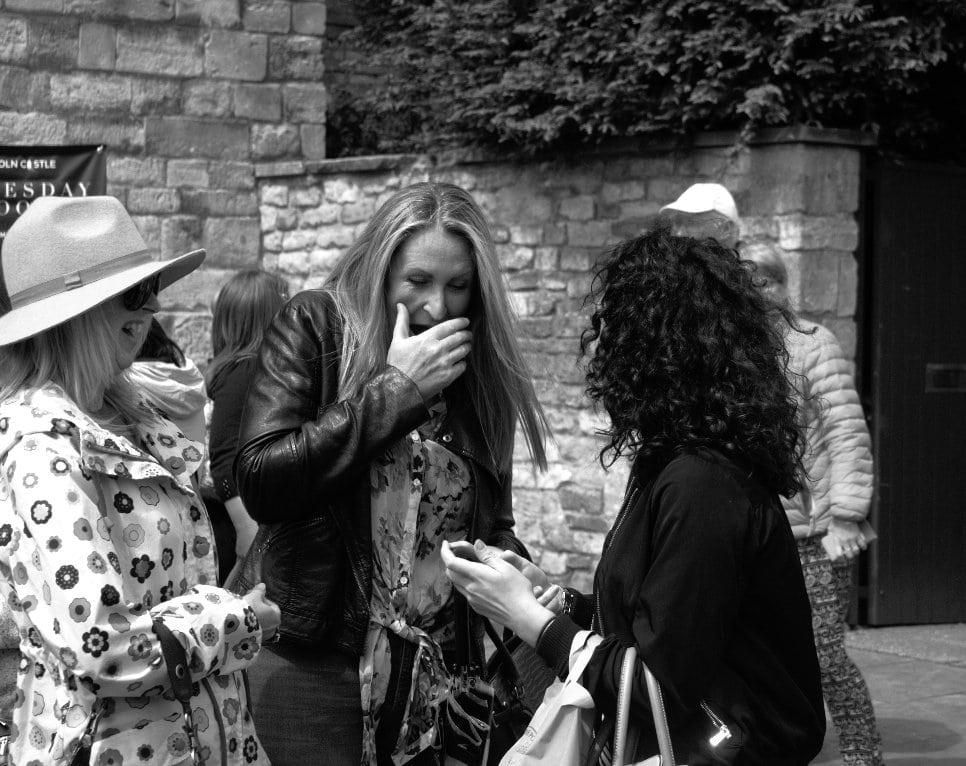
Observing the happy public is wonderful to capture, as much as the sad. Deciding on colour or black white could be essential to your final image. Using black and white you can provide clarity and remove distractions.
Street photography is a playful hobby, rather than a taught genre of photography.
Reason 2 – Push boundaries
If your heart does not raise when you are shooting you are probably not human. You will have natural feelings of guilt or horror. How dare you shoot a member of the public and what if they see you?
The old adage comes in here, practise makes perfect, every time you go out it gets easier. A great sign of confidence is to get nearer and nearer, either using your feet or wider lens.
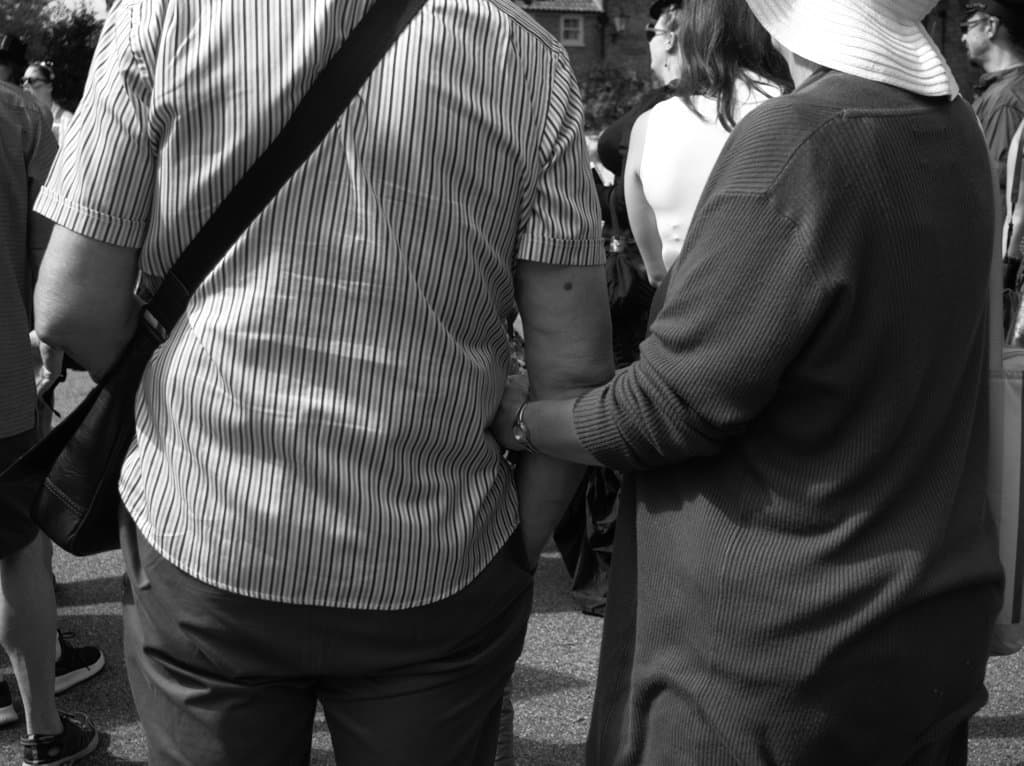
Seeking out individual people to fill a frame is usually difficult. With a prime lens you have to balance your courage against composition. Using the compositional technique of “space” combines well with individuals. Being prepared helps here, which is where distraction techniques are useful. Pretend you are shooting behind the subject, let them interact around you. This will allow you to choose when to press the shutter.
A useful tip here is to be selective with your clothing you wear on your street walk. Think about wearing simple colours so you don’t stand out. You will ruin your chances of candid shots if people notice you all the time. If you are the sort of person to ask permission first or are brave enough already this will not be relevant.
Reason 3 – Healthy
Walking is a natural stimulant for the body and promotes healthy living. Park your car away from the place you are going and walk everywhere, the slower you go the more you see. Get on a tube, bus or train could be a necessity for you, but don’t use it where you don’t need to.walking is good
When you see that person you want in your shot, get going fast, prepare, act and shoot. Move on to your next place and loop back if necessary, not all locations make great backgrounds.
Living in Lincoln, there is a famous “steep hill” so to keep fit I park at the top of the hill. From there I can walk miles down towards the university areas and back up towards the end of the night.
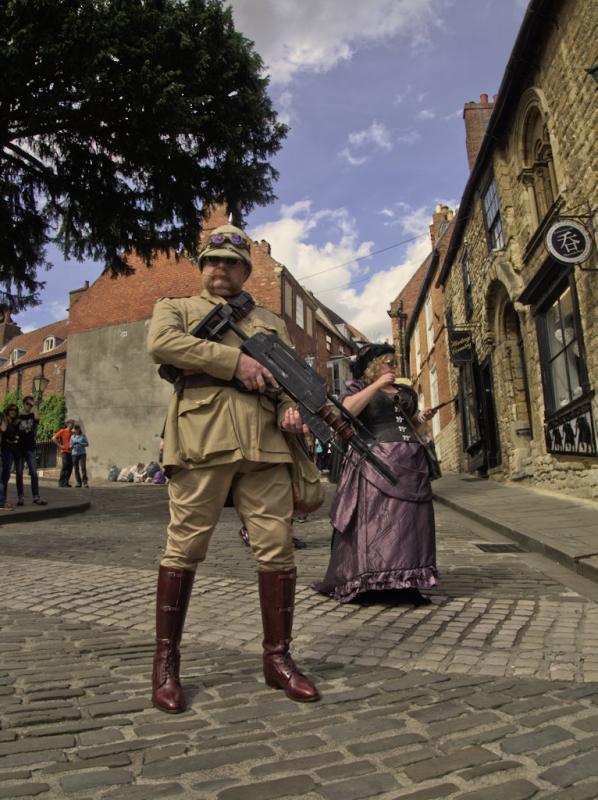
Health is not always about fitness but the mind too. Fun and interaction with others should keep you positive.
Reason 4 – Social
There are so many different types of random events that can happen when you have a camera. There are drunks, mild-mannered people and inquisitive people like you who might ask what you are doing. Do not be scared, be yourself, use your personality and introduce yourself.
Tell people what you are doing, they may genuinely be interested in helping, so tell hem. If you are working on a project tell them quickly about it. Provide them with a way of getting in touch with you (even a cheap business card is useful). The first time I approached a stranger they followed me on twitter and even emailed me!
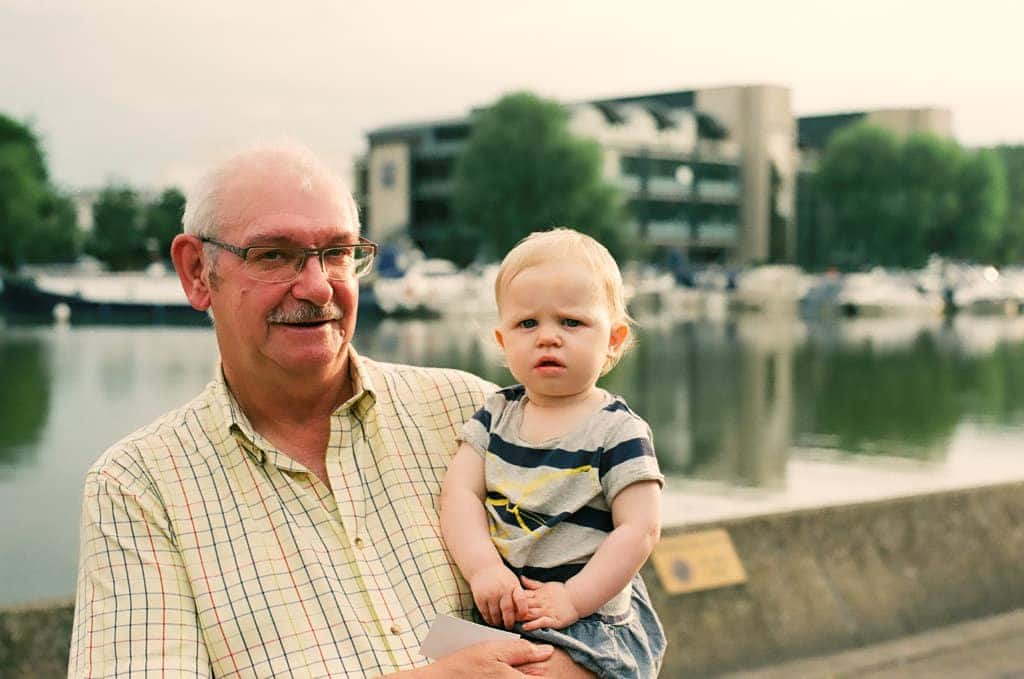
Shooting film is another tip to invoke a conversation. Some strangers have approached me after seeing a film camera. The older generation remembers similar cameras and are amazed film is still going.
If you form a conversation, ask them for a street portraiture too, all add to your experience.
Reason 5 – Composition
Using a zoom lens may deliver more of a portrait style shot, as there is a lot of background separation. This may look nice, but it is not really street photography. Of course, as we keep saying there is no hard and fast rule. Street portraiture is a lovely and useful skill to have. Working with natural light and the public is practice after all.
As you get used to shooting with wider lenses you start to involve more backgrounds. A useful bit of advice is to go out one night and look for backgrounds. Take a picture on your mobile and you have an instant GPS memory of the location.
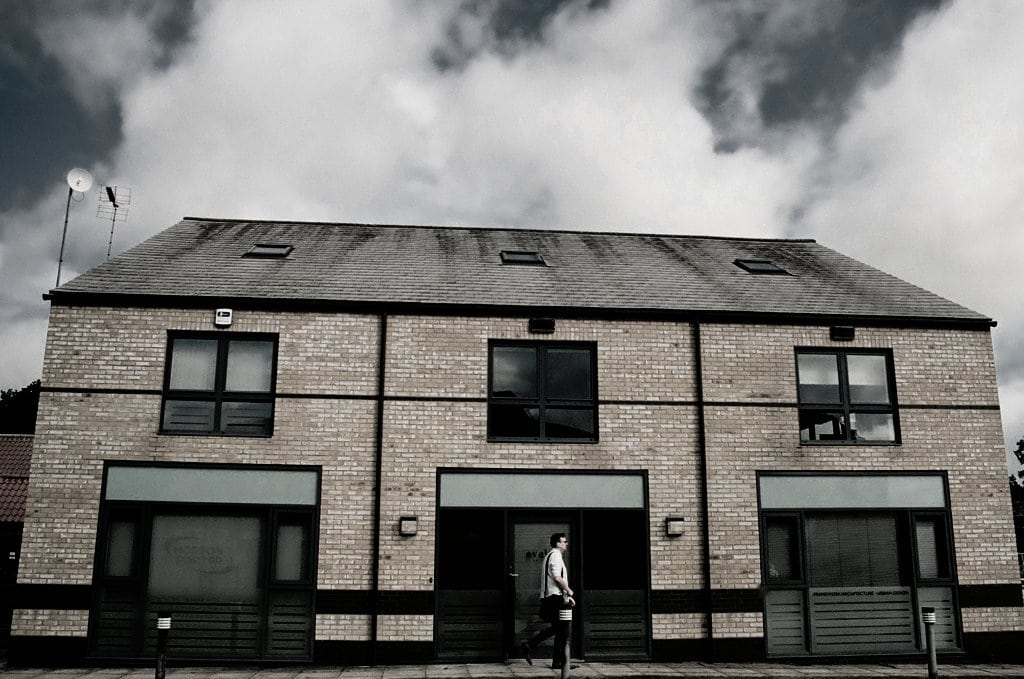
There seems to be a distinct relationship with street photography and composition. There are so many useful rules of composition to use, whether its leading lines, space, rule of thirds, rule of odds. Each of them can help improve your picture of that interesting person.
One of the best tips anyone could give you is to shoot with film, you concentrate far more on the end product. By having fixed elements (slow shutter or fixed iso) you don’t get bogged down with buttons and use your eyes.
Reason 6 – Time
One of the best parts of street photography is you can shoot any weather, anytime, any season. Each season or weather will challenge you with a different constraint. But each one is great for your skill set.
During the autumnal and late night of winter, go out and shoot silhouettes in alleyways. Use street lighting as your light source and watch your colour balance.
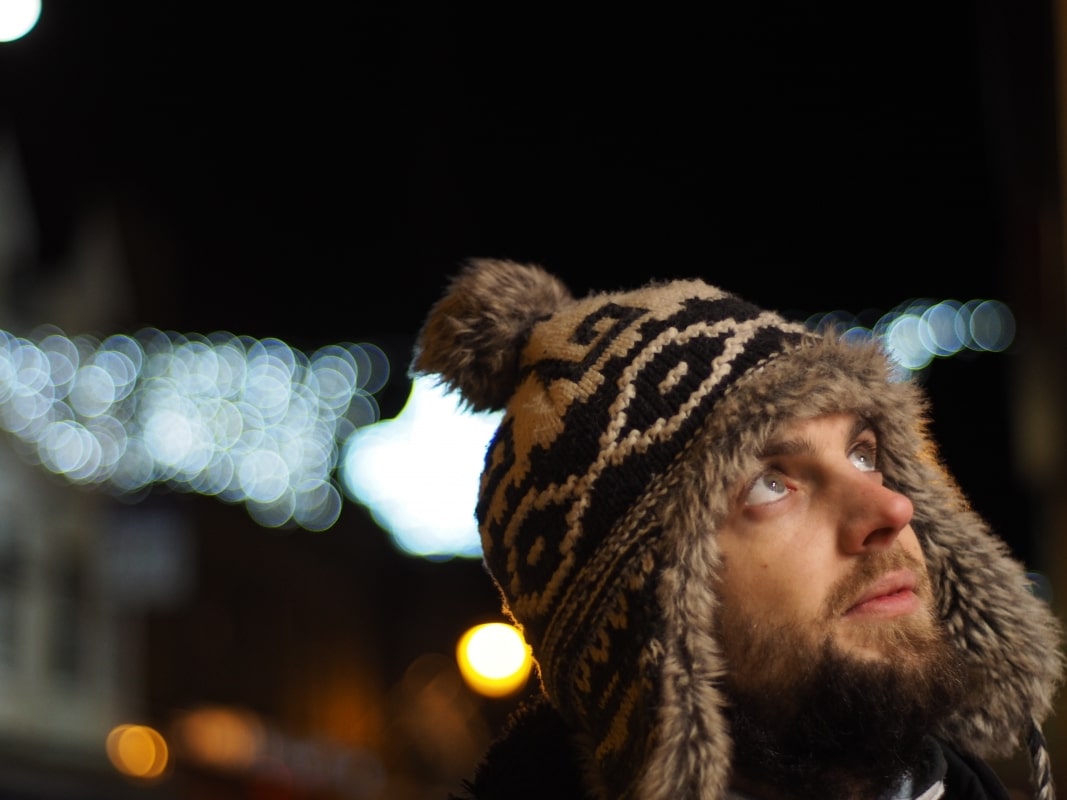
Rainy days bring out the details in the pavements and cobbled streets. Water is a natural reflector too, so combine this with other elements. Colours such as traffic lights look interesting in the rain. Puddles on the pavement can reflect the public walking past too.
Using combinations like night and rain often involves different clothing and attitudes. So during rain people have umbrellas and can be full of gestures and facial expressions.
Look out for telephone boxes (in the UK) as they are a natural shelter and you can shoot through the glass.
Reason 7 – Technology
Never ever, let anyone tell you what equipment is required, there is no such thing. You can get away with anything, compacts, smartphone, bridge cameras or film cameras. The type of shooting you do and the points above will dictate your requirements.
As a beginner, start in the day, you will achieve a larger depth of field and use what camera you have.
Shooting in the bad weather will involve thinking about your equipment. Can get away with a carrier bag over your camera or is it weather sealed. Can you carry an umbrella with you and will you need a tripod? Just think about it, digital equipment is sensitive so be careful.
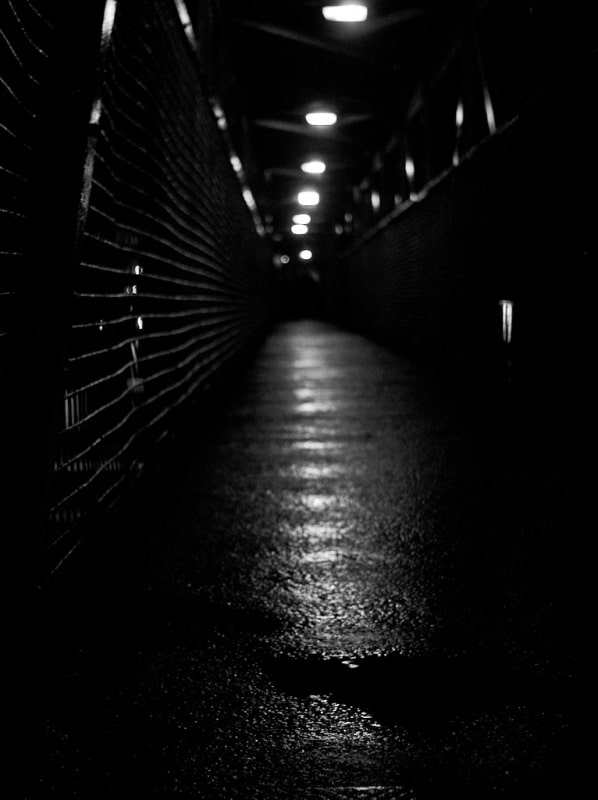
Shooting at night will limit your choice in some respects. If you want to shoot film, you will have to fool your camera meter (if you have one). You have to work out how to shoot at a higher iso and push the film during the developing stage. Not all film cameras require batteries, so in theory, they may work in the rain.
Using a mirrorless DSLR is a great choice for many, as this allows you to use vintage manual lenses. These older lenses are still great quality and require a low-cost adaptor to fit. The downside is having to manually focus. But most mirrorless cameras have the focus peaking ability. This shows you on your viewfinder the element in focus as you adjust your aperture. This is so useful when you are shooting a small focal length like f1.8 or f2.8. Combine this with a zoom button, you can nail your focus and get great results. The ability of a mirrorless with the vintage equipment allows you to shoot at f1.8 at night in the dark. Where most cameras would struggle (yes even full frame high-end) you can focus and shoot.
Reason 8 – Film
This article is not designed to be a film versus digital argument of any kind. The type of camera you use is down to you, your experience, what cameras you own and what funds you have.
A film camera offers you a full frame size and large viewfinders. You are not bogged down with technical aspects of cameras, lenses or flip out screens. Having so few controls allows you to concentrate on the composition. You only have to consider focusing, the aperture and shutter speed.
For those of you with limited funds, remember a 35mm film camera has the same sensor size as a £1000-2000 DSLR.
Because of the range of films, you will never stop learning. Each one will bring different grain, tones or shadows. Using different chemicals to develop will bring different results.
Starting with film before using digital, allows you to understand light much more. You understand constraints and how to work around them. Making a choice NOT to shoot is just as important as pressing the shutter.
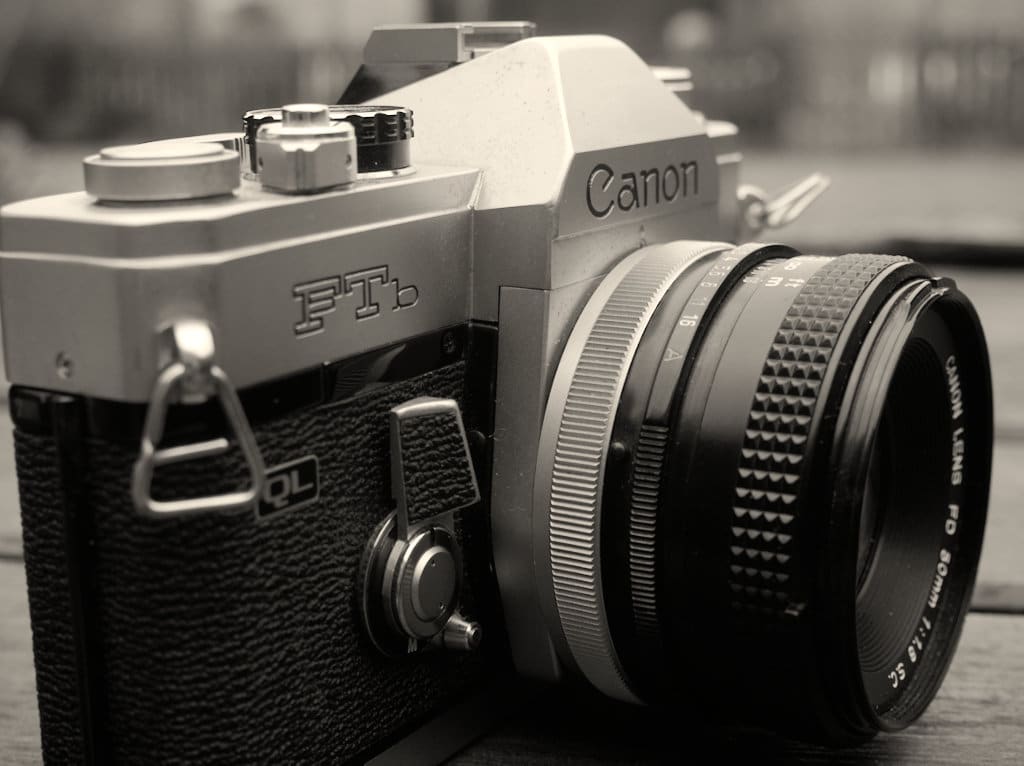
There is such a variety of cameras available, 35mm to medium format and large format. Having used colour and b&w for 35mm and medium, I love them all.
Just remember there are downsides, the Bronica with a “sports grip” has a very loud shutter. Be careful or brave when shooting in this context so you are not noticed on quiet streets.
Conclusion
With so many excuses to go out and shoot, what is stopping you? Take advice from others, use the internet for research. Practise and learn from it, you will improve, you will get braver, you will get closer.
Challenge yourself to something achievable, but push your boundaries. Find a comfortable pair of shoes and don’t delay, try different times of the day.
Think I am wrong or disagree with these points, then prove it, provide evidence. My goal is to help you try, learn and improve.
My mantra is “be true”, which you will see me talk about more. These just means be yourself, learn from others but do it your way. Keep shooting and you will find your calling, by being true to yourself.
Want to know more?
Want more information on street photography then check out my book – “beginners guide to street photography”
For more street images check out the Phlogger’s Instagram feed – @pavementsphotography
Keep up the Phloggers’s film photography on Instagram here – @phlogger_analogue
Sign up for the newsletter and keep checking the blog – phlogger.co.uk
If you want to collaborate or chat email me – enquiry@phlogger.co.uk
